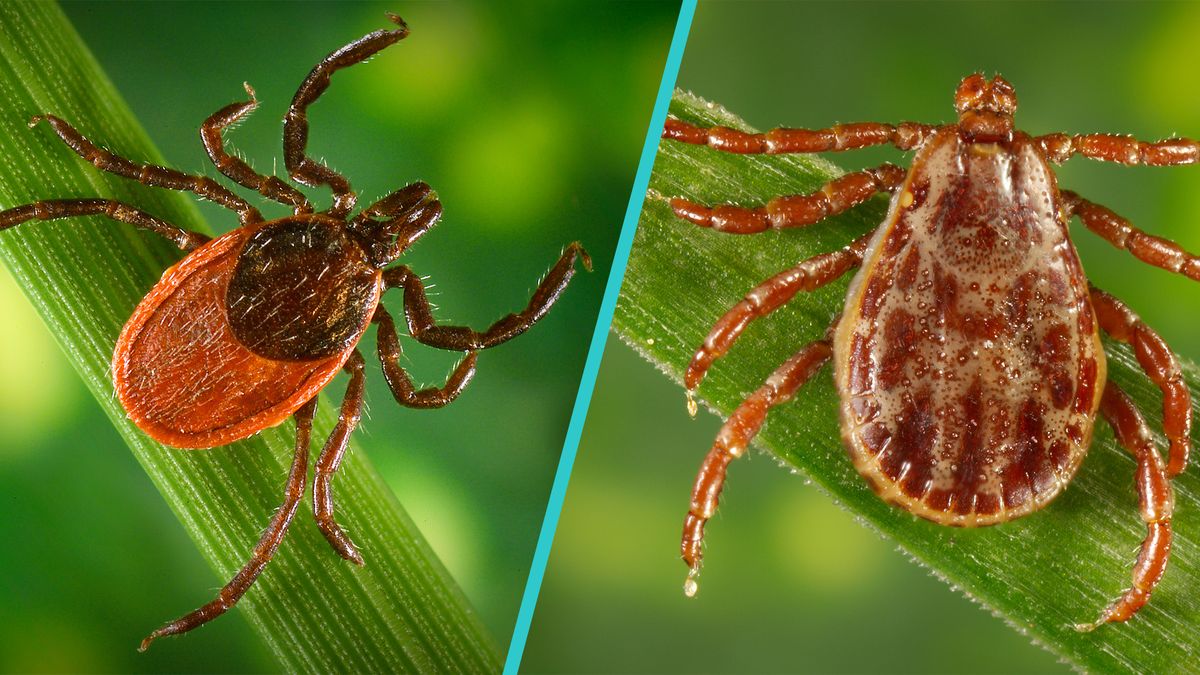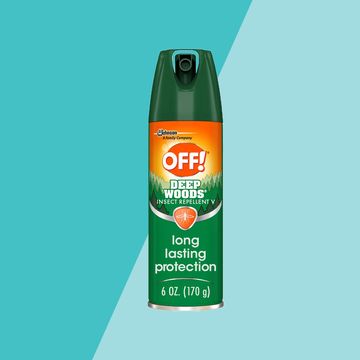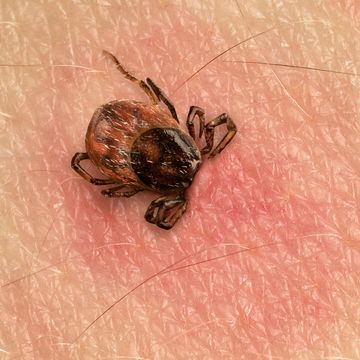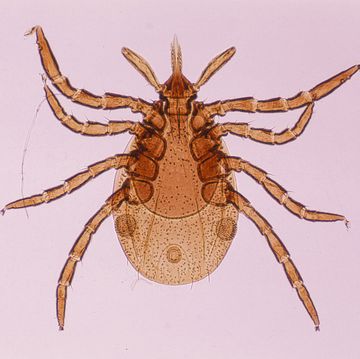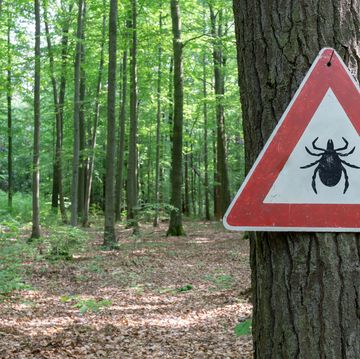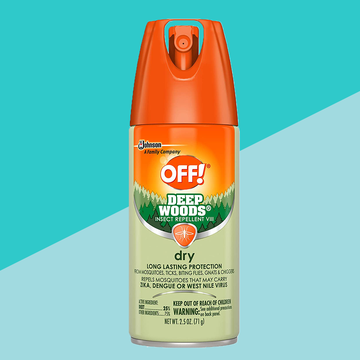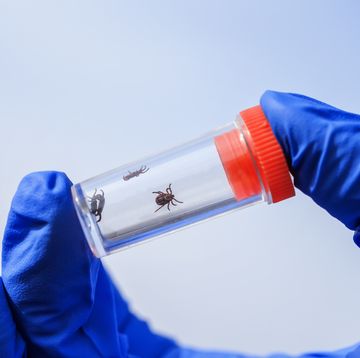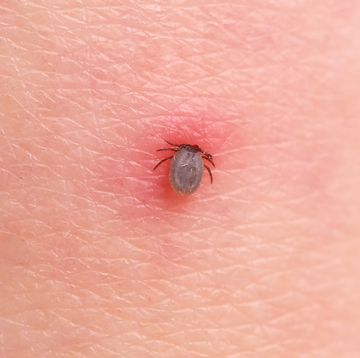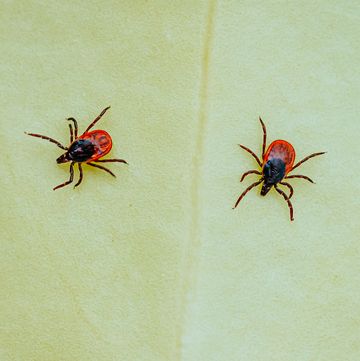Temperatures are rising, days are getting longer, and flowers are blooming again. Tick season is officially upon us.
There are several tick species throughout the U.S., but two of the most common are deer ticks (blacklegged ticks) and wood ticks (most commonly American dog ticks), and while they might cover similar territory, they have the potential to carry and transmit different diseases.
According to the Centers for Disease Control and Prevention (CDC), reported cases of tick-borne illnesses have more than doubled over the past two decades, meaning it’s more important than ever to understand where these tiny bloodsuckers live, the pathogens they carry, and what to do if you’re unlucky enough to find one latched onto you.
To determine the key differences between deer ticks and wood ticks, we turned to Mike Merchant, Ph.D., a professor and urban entomologist at Texas A&M University’s AgriLife Extension Service. Here, everything you need to know about each species:
What do deer ticks look like?
Deer ticks, also known as blacklegged ticks, are hard ticks identifiable by their black legs, red-orange body, and black scutum, which looks like a dot on the upper half of its shield.
Another important feature: “They’re very small, maybe half or two-thirds the size of a normal tick,” Merchant notes. “They’re easy to overlook. They could be attached to your skin and you don’t notice it because of the small size.” (Think: as small as a poppyseed.)
Where are deer ticks found?
“There are deer ticks in most parts of the U.S.,” Merchant says. The CDC notes that they’re widely distributed in the eastern United States, from Maine to Florida, and into parts of Texas, Colorado, and the Dakotas.
You can be bitten by a deer tick any time during any season, but they have unique timing. “One of the clues [is] that it’s a tick that you’d typically pick up earlier in the season, like early spring or winter,” Merchant says.
What diseases do deer ticks carry?
Deer ticks are perhaps the most feared species because they are known to carry the bacteria that can cause Lyme disease, Borrelia burgdorferi and B. mayonii. “The deer tick is what we think is the primary vector of Lyme disease across the whole U.S.,” Merchant says.
Deer ticks spread Lyme disease by feeding on infected hosts, including mice and deer. Most ticks feed three times in their lives, once at each life stage. Tick larvae and nymphs are more likely to feed on smaller animals, while adults often seek out larger hosts, including humans, Merchant says. In other words, adult ticks have already had two previous chances to pick up Lyme, making them more likely to spread it to human hosts.
Deer ticks also carry other unpleasant diseases, like relapsing fever, anaplasmosis, ehrlichiosis, babesiosis, and Powassan virus.
What should I do if a deer tick bites me?
If you suspect you’ve been bitten by a deer tick, you should attempt to remove it as quickly as possible. Merchant recommends simply using a pair of tweezers. “Grab the tick as close to the skin as possible,” he says. “Gently pull it straight out. It’s going to stick at first, but if you’re steady, keep up the pressure, and do it very slowly, it will pull the mouth parts out of the skin.”
When it’s out, put the tick in a sealable plastic bag and set it in the freezer. Merchant recommends that you monitor the bite and watch for the development of a bullseye-shaped rash. If you notice a rash or start to experience flu-like symptoms, contact your doctor. The frozen tick will be a great resource for determining if you’ve been exposed to Lyme.
What do wood ticks look like?
“Wood tick” is actually a generic name that could apply to a number of species of ticks, Merchant says, but it’s most commonly used to describe American dog ticks, which have dark brown bodies. Male American dog ticks present a mottled gray pattern, while females have an off-white scutum. Wood ticks are larger than deer ticks, making them a bit easier to spot.
Where are wood ticks found?
American dog ticks are commonly found east of the Rocky Mountains and parts of the Pacific Coast, including most of California, according to the CDC.
What diseases do wood ticks carry?
American dog ticks can transmit pathogens that cause tularemia and Rocky Mountain spotted fever. (Other species of ticks also dubbed “wood ticks” can spread different diseases, so make sure you know which type of tick you’re dealing with.) They are not known to carry Lyme disease.
Just like deer ticks, American dog ticks are three-host ticks, meaning adults have already fed twice before they seek out humans. Not all tick bites are caused by adults, but it’s most likely that a human would be a tick’s third host, Merchant explains. “Our risk is going to be higher for getting a disease because those ticks have fed on other animals,” he says.
What should I do if a wood tick bites me?
Unlike a deer tick bite, a wood tick bite won’t cause the classic bullseye rash. If you find a wood tick on your body, use the same method Merchant recommends above: Gently pull the tick out using tweezers. “You don’t want to twist and bend,” Merchant warns. “If you break the head off, it can continue to expose you to whatever pathogens might have been in its mouth parts.”
And like before, save the tick in a sealable plastic bag and store it in the freezer. If you start to notice any unusual symptoms associated with the diseases above—including a fever, chills, headaches, stomach or muscle pain, and a dotted rash on the skin—the insect will be available for testing.
Support from readers like you helps us do our best work. Go here to subscribe to Prevention and get 12 FREE gifts. And sign up for our FREE newsletter here for daily health, nutrition, and fitness advice.

Jake Smith, an editorial fellow at Prevention, recently graduated from Syracuse University with a degree in magazine journalism and just started going to the gym. Let's be honest—he's probably scrolling through Twitter right now.
